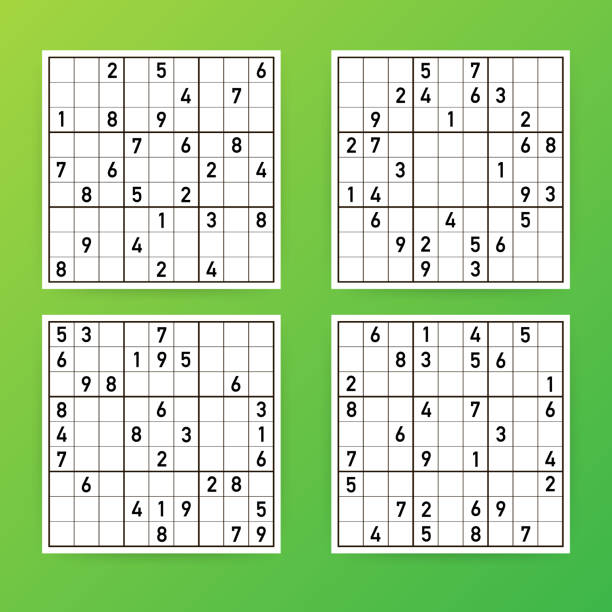How Sudoku is Played
Sudoku is a logic-based number placement puzzle that consists of a 9×9 grid divided into nine 3×3 subgrids, or “blocks.” The objective is to fill the grid with numbers 1 to 9 while adhering to specific rules.

Basic Structure
- Grid Layout: The Sudoku grid has 9 rows and 9 columns, resulting in 81 cells.
- Blocks: The grid is divided into nine 3×3 blocks, each containing nine cells.
Rules of Sudoku
Sudoku is a popular logic-based number puzzle that consists of a 9×9 grid, divided into nine 3×3 subgrids or “blocks.” The objective is to fill the grid with numbers from 1 to 9 according to specific rules. Below are the complete rules for playing Sudoku.
Basic Structure
- Grid Size: The Sudoku grid is a 9×9 matrix, which contains a total of 81 cells.
- Blocks: The grid is divided into nine 3×3 blocks, each containing nine cells.
Fundamental Rules
- Use Numbers 1-9: Each cell in the grid must be filled with a number from 1 to 9. This is the only range of numbers used in Sudoku.
- No Repetition in Rows: Each row must contain every number from 1 to 9 exactly once. No number can appear more than once in any row.
- No Repetition in Columns: Each column must also contain every number from 1 to 9 exactly once. Similar to rows, no number can repeat within any column.
- No Repetition in Blocks: Each of the nine 3×3 blocks must contain every number from 1 to 9 exactly once. This means that within each block, no number can be duplicated.
- Logical Deduction Only: Sudoku puzzles are designed to be solved using logic and deduction. Guessing is not required or recommended; players should use reasoning to determine where numbers fit based on existing numbers in rows, columns, and blocks.
- Single Solution: Every Sudoku puzzle has only one unique solution that can be reached through logical deduction without ambiguity.
Additional Considerations
No Small Notes: While players may use small notes or candidates (smaller numbers written in the corner of cells) to keep track of possible numbers for each cell, only one definitive number should occupy each cell at any time
Initial Clues: Most Sudoku puzzles come with some cells pre-filled with numbers, providing clues that help players start solving the puzzle. The fewer clues provided, the more challenging the puzzle typically becomes.
Process of Elimination: Players often use a process of elimination to determine which numbers can fit into empty cells by checking what numbers are already present in the corresponding row, column, and block.

How to Play Sudoku
Step-by-Step Guide
- Gather Materials: You will need a Sudoku puzzle (available in newspapers, books, or online) and a pencil (or an online platform that allows for digital play).
- Understand the Initial Setup: Most puzzles come with some cells already filled in. These are your clues to start solving the puzzle.
- Start Solving:
- Begin by scanning rows, columns, and blocks to identify which numbers are missing.
- Use the process of elimination to deduce where numbers can fit based on existing numbers in the same row, column, or block.
- Avoid Guessing: Sudoku is a game of logic. If you find yourself unsure about where to place a number, look for other areas of the grid that may provide more clues rather than guessing.
- Use Notation: It can be helpful to jot down possible candidates for each cell (small numbers) until you can confidently place a definitive number. This technique is especially useful in more complex puzzles.
- Continue Filling In: As you solve more cells, new opportunities will arise for placing additional numbers. Keep using logical reasoning and elimination strategies until the grid is complete.
- Check Your Work: Once all cells are filled, verify that each row, column, and block contains all numbers from 1 to 9 without any repeats.
Tips for Beginners
- Start with easier puzzles to build your skills before tackling more difficult ones.
- Take breaks if you get stuck; sometimes stepping away can help you see solutions more clearly when you return.
- Practice regularly to improve your logical reasoning and familiarity with common patterns used in Sudoku.

Conclusion
Sudoku is Played is an engaging puzzle that sharpens logical thinking and problem-solving skills. By understanding its rules and practicing consistently, players can enjoy both the challenge and satisfaction of completing these puzzles. Whether played on paper or digitally, Sudoku offers endless variations and levels of difficulty to explore.



